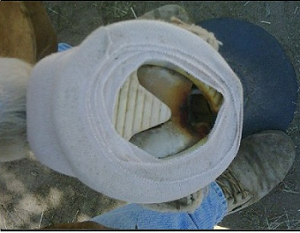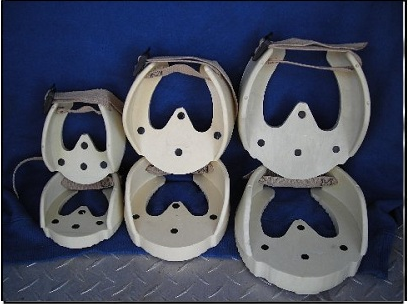Famous Horse with Laminitis
– An Indiscriminate Condition
Laminitis is a word that no horse owner wants to hear a connection with their prized animal. Far too many horse owners believe that a diagnosis of laminitis is an automatic death sentence. While it is true that this condition can be painful and stressful and in some instances required an animal to be euthanized, it is possible for a horse with this condition to recover. Especially if the condition is caught early, it is possible for a horse to make a full return to its former glory after battling laminitis. Early detection is the key when it comes to battling this condition.
There have been a number of famous horses that have had laminitis, and many have made an exceptional recovery. The racehorse kip Deville famously battled this condition early in 2010. There have also been some famous casualties associated with laminitis. 1991’s horse of the year, Black Tie Affair, was euthanized after battling the condition. The thorough bred Odysseus was also euthanized due to laminitis complications. Mr. Greeley, a thorough bred stallion, was diagnosed with laminitis and later euthanized on November 30, 2010 after his condition deteriorated. It is tragic that so many fine horses were put down due to this condition.
Laminitis can be caused by a number of different factors. In many cases the condition is caused by horse eating an excessive amount of grain or springtime grasses. It is also possible for an animal to get the condition if they spend a large amount of their time on a hard surface. In instances where the condition is caused by insulin resistance, it can be harder to treat than when it is caused by external forces. Any owner that notices a horse spending a large amount of its time lying down or trying to transfer the majority of its weight to its back legs while standing, should consult with a veterinarian right away.
Laminitis can affect all of the animal’s legs, but most commonly affects only the front legs. Horses put an incredible amount of weight and pressure on their legs and a condition that causes pain in the legs or hooves can be unbelievably painful and stressful for the animal. Regularly inspecting a horses hooves and closely monitoring the way that it stands and walks can give clear indications as to whether or not the animal has laminitis. Even some of the most famous horses in history have suffered with this condition, which is why it is so important to monitor a horse’s health.
Laminitis Treatment
Overview and Function- The Outlaw Pad
The Outlaw Pad is a glue on product that provides treatment for horses diagnosed with acute laminitis. The Outlaw Pad is designed as an aid in reducing pain and increasing blood flow to the hoof. It can be used in any situation that involves pain in the hoof such as abscesses, sole punctures, white line resections, founder and of course Laminitis. People love their horses as they are part of the family. We will try and explain how laminitis and inflammation in this stage of acute laminitis can be helped or at least reduced. The damage that will occur from laminitis can be offset by using the Outlaw Pad. So no further damage happens in the hoof. The more damage the longer the recovery time will be.



Laminitis Treatment- The Outlaw Pad
Laminitis is the inflammation or swelling in the sensitive laminae. This can be caused from any number of causes. The Outlaw Pad is an open toe heart bar shoe/pad. That has been used for hundreds of years if not longer. Let’s break down the design. It offers full heel support if you look at the true laminitic or founder stance in horses they are back their heels trying to relive pain in the toe. By supporting the heel with a pad like shoe you protect the one part of the hoof that can support the horse the heel. As we move to the middle of the Outlaw Pad it has a heart bar which is a support for the frog of the foot. The frog in a normal foot allows the hoof to expand and contract to aid in blood flow. When a horse stands on its heel it compresses the frog slowing blood flow the heart bar aids in pumping blood to the frog and hoof. The open toe is an important part of the overall design. In laminitis you have swelling but limited damage as of yet. The open toe dose a few things related to the hoof. It allows the sole to expand unrestricted if there is a shoe across the toe. The sole at the toe will be compressed and cause damage such as bruising or abscesses. With expansion unrestricted it aids in blood flow without compression both in the top section circumflex artery which feeds the coronary band and the dorsal venous plexus (this is the blood supply to the sole of the hoof). The Outlaw Pad has an overall heel elevation of five degrees. Which temporary relieves the pull of the deep digital flexor tendon (DDFT). Which attaches to the point of the coffin bone this pull can and dose cause rotation which is founder. Look at our Founder treatment page. The Outlaw Pad is designed to help the laminitic foot not reach this point of possible rotation and with veterinary care and farrier help we can limit the damage to the hoof. Also shorten the recovery time of an acute laminitic case. The faster the Outlaw Pad is used from the onset of acute laminitis the better the overall outcome!!